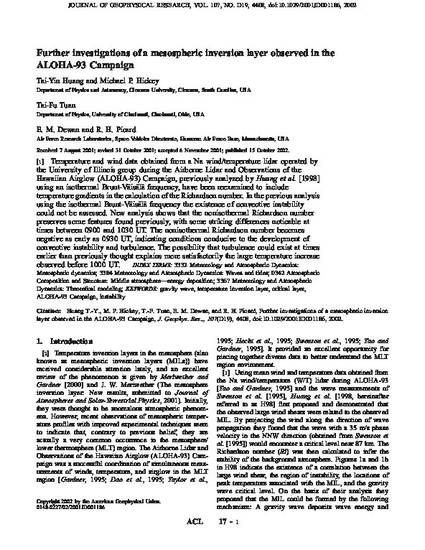
Temperature and wind data obtained from a Na wind/temperature lidar operated by the University of Illinois group during the Airborne Lidar and Observations of the Hawaiian Airglow (ALOHA-93) Campaign, previously analyzed by Huang et al. [1998] using an isothermal Brunt-Va¨isa¨la¨ frequency, have been reexamined to include temperature gradients in the calculation of the Richardson number. In the previous analysis using the isothermal Brunt-Va¨isa¨la¨ frequency the existence of convective instability could not be assessed. New analysis shows that the nonisothermal Richardson number preserves some features found previously, with some striking differences noticable at times between 0900 and 1030 UT. The nonisothermal Richardson number becomes negative as early as 0930 UT, indicating conditions conducive to the development of convective instability and turbulence. The possibility that turbulence could exist at times earlier than previously thought explains more satisfactorily the large temperature increase observed before 1000 UT.
